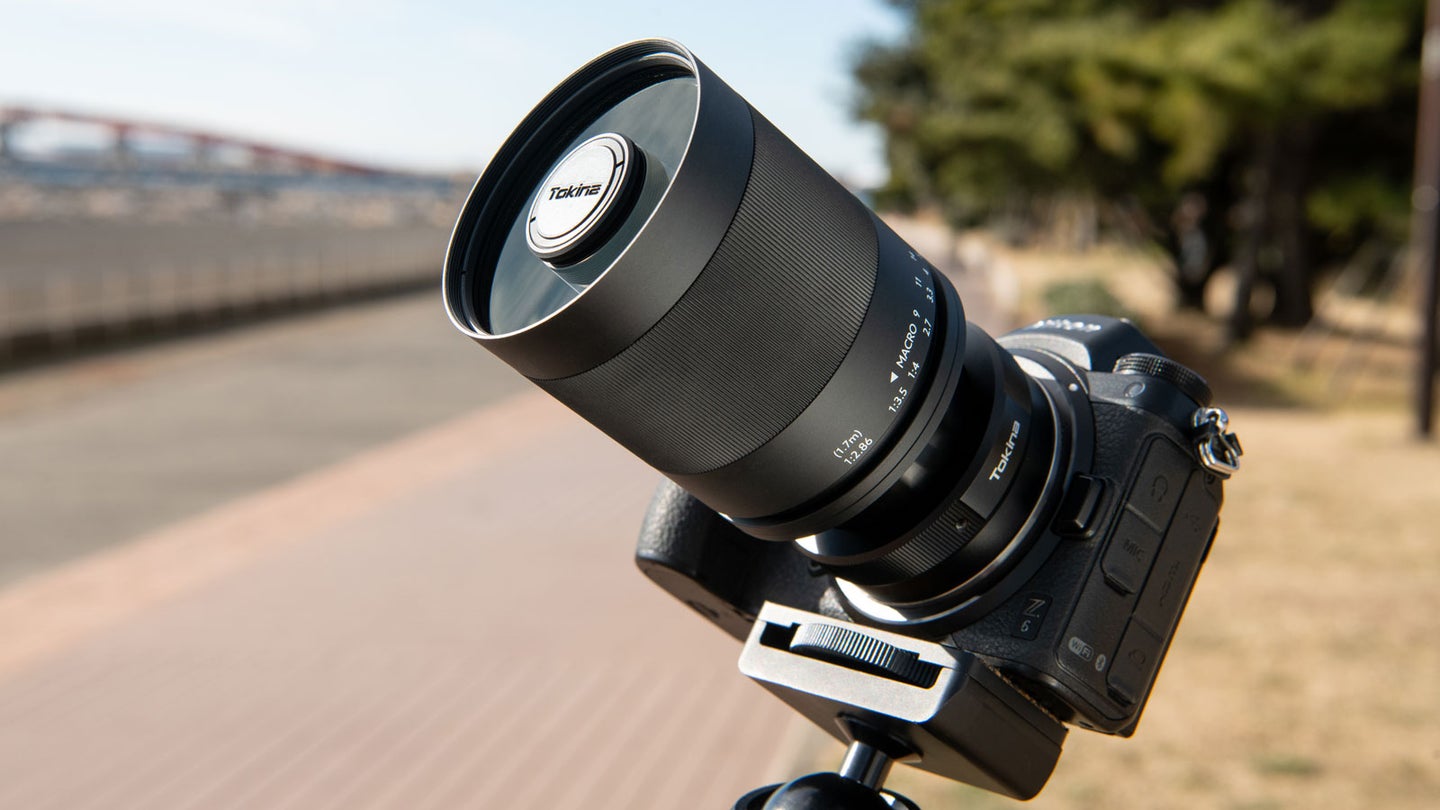
2022 looks set to be a good year for fans of mirror lenses. Last month, Japan’s Kenko Tokina announced the Kenko Mirror Lens 400mm f/8 N II, a refresh of its relatively recent 2020-model 400mm f/8 optic. Now, it’s following up with a 500mm f/8 prime that will give you even more telephoto reach for not much more heft.
Like last month’s reveal, the Tokina SZ Super Tele 500mm f/8 Reflex MF is a Japanese-made mirror lens. Set to ship imminently, it’s likely to be very affordable (pricing info has yet to be revealed) and offers a lot of reach in a very small package. It will be available for a wide range of camera mounts, but its portability will come at the expense of some image quality as well as rather divisive donut-shaped bokeh.
Unlike like month’s 400mm, this isn’t a refresh of a recent lens. It’s been a while since Kenko Tokina has offered a 500mm mirror optic, although the company did sell several different 500mm f/6.3 and f/8 mirror options back in the analog era.
The eagle-eyed amongst you will have picked up on the fact that the new lens only bears the Tokina badge, whereas last month’s 400mm prime is instead being sold only under the Kenko name. The 500mm is also referred to as a reflex lens, whereas the 400mm is called a mirror lens, making for extremely inconsistent branding between two products that would both seem aimed at the same customer base.
What is a mirror lens?
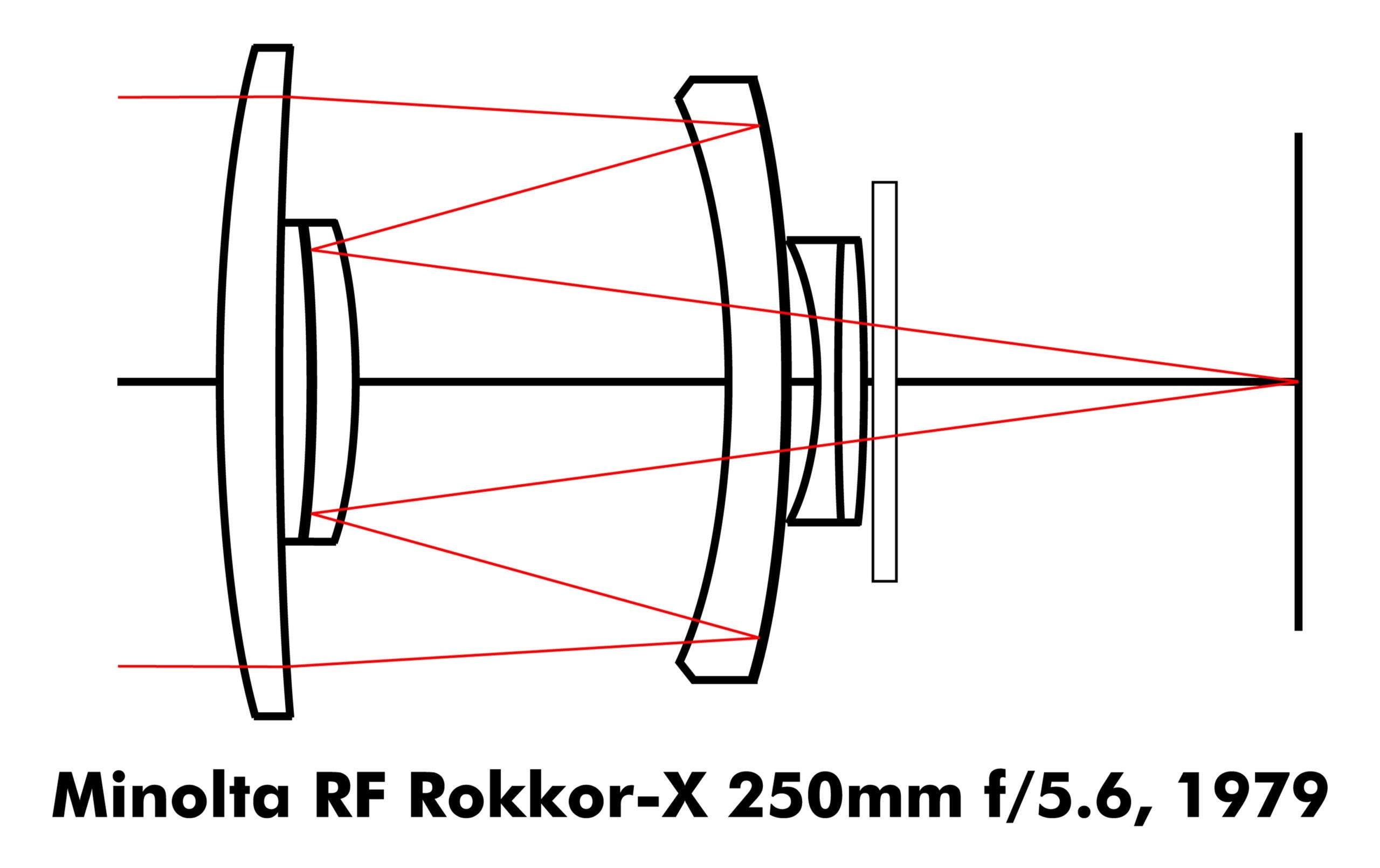
For those who aren’t already familiar with mirror lenses, you’ll also hear them referred to as reflex or catadioptric lenses. In essence, they’re more akin to a telescope than a more typical telephoto lens.
Their compact size is achieved by folding the optical path back on itself repeatedly within the lens. The first fold is caused by a mirror towards the rear of the lens which redirects the light back forwards and focuses it on a second mirror that sits behind the center of the front lens element. This, in turn, redirects incoming light back through a hole in the center of the first mirror and onwards toward the camera’s image sensor.
Image quality tends to be better in some respects but worse in others

This design allows for a much shorter, lighter lens than would otherwise be possible with a more traditional lens design. It also makes for a much more affordable optic, since creating its mirrored glass elements is a much less complex process than that of molding and polishing refractive lens elements for a traditional lens.
Mirror lenses also tend to show much lower levels of chromatic and off-axis optical aberrations than refractive lenses. That’s due to the light being reflected off each mirrored surface rather than passing through them all in turn, reducing the opportunities for different wavelengths of light to be refracted differently.
The technique does, however, bring with it some disadvantages as well. Firstly, mirror lenses are almost always focused manually. (The sole exception being the Sony/Minolta AF Reflex 500mm f/8 lens.) They also tend to have lesser sharpness and contrast levels than do refractive optics, although post processing can certainly help level the field a bit.
Doughnut-shaped bokeh can prove fun or frustrating

Perhaps the image quality concern that stands out the most, though, is their doughnut-shaped bokeh. Caused by the mirror behind the front lens element, the effect can give a business even to backgrounds with moderately high contrast. It’s particularly noticeable where you have strong specular highlights, which are rendered as bright, crisp doughnuts.
With the right subject, it can be an eye-catching and attractive trait. With the wrong one, though, it can be very distracting, drawing your attention away from your intended subject and onto the background.
A fixed aperture means no DOF control and more limited exposure control
One other important difference to note from a traditional refractive lens is that mirror lenses don’t offer adjustable apertures. What you see on the label is what you get in terms of aperture, and so there’s no control available over depth of field. Also, exposure control must be performed solely using the shutter speed and ISO sensitivity.
Who’s it for?
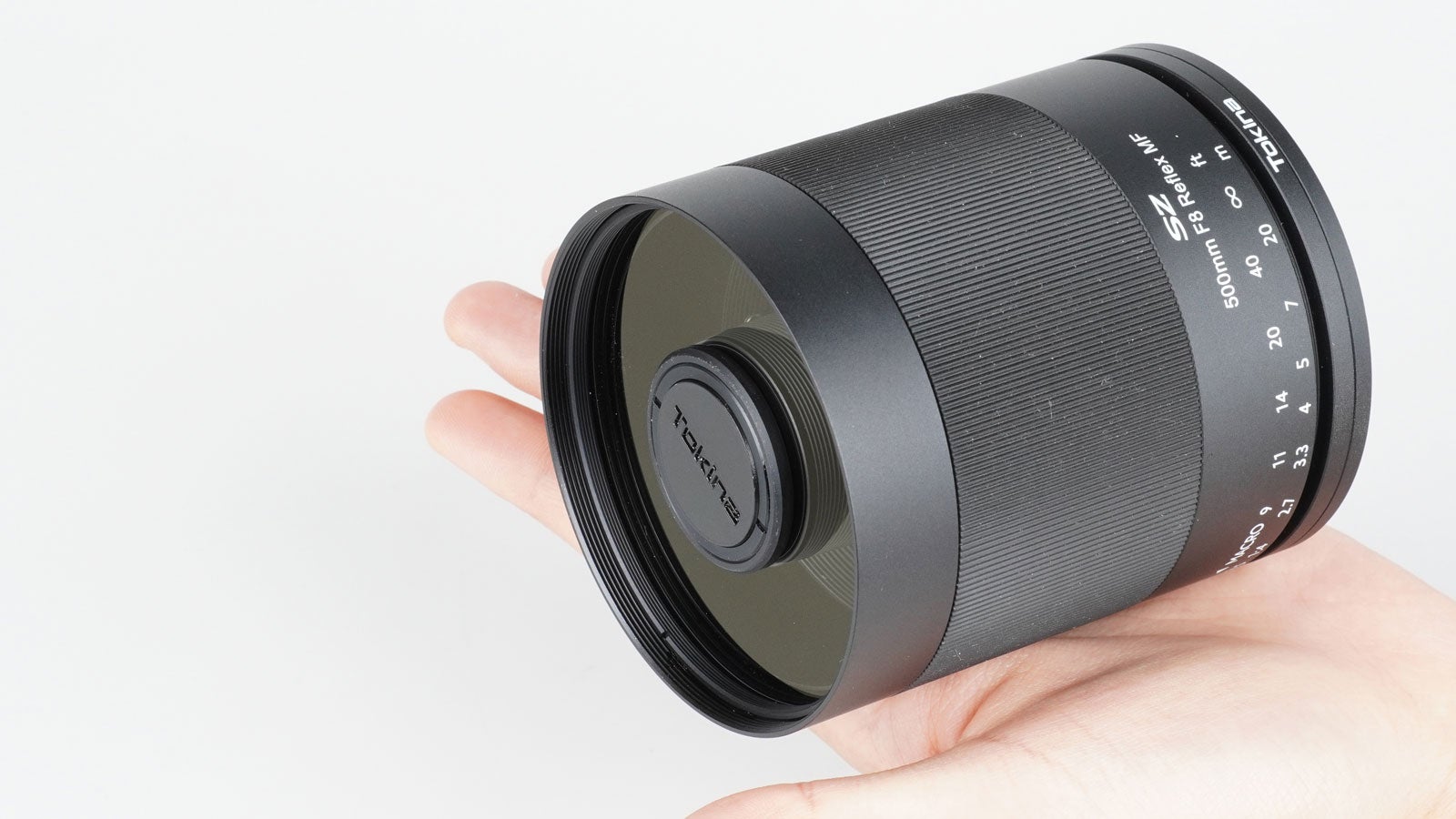
The primary target customer for the Tokina SZ 500mm f/8 will be photographers who’re looking to bring smaller, more distant subjects right up close, and who need to prioritize portability and cost over image quality.
That likely makes it of particular interest to enthusiastic amateurs wanting to shoot subjects like wildlife and sports. If your subjects will be varying in distance significantly, though, the lack of autofocus is quickly going to prove tiresome. You’ll thus want to consider the needs of your particular subjects. There’s also some potential for light macro work or occasional portrait use.
Higher-end users who want the crispest-possible results and can afford the added cost and heft will want to look at a refractive lens instead. They still might want to pick up a lens like this for the artistic potential of its doughnut bokeh in some circumstances, though.
There’s really no name-brand competition for this lens
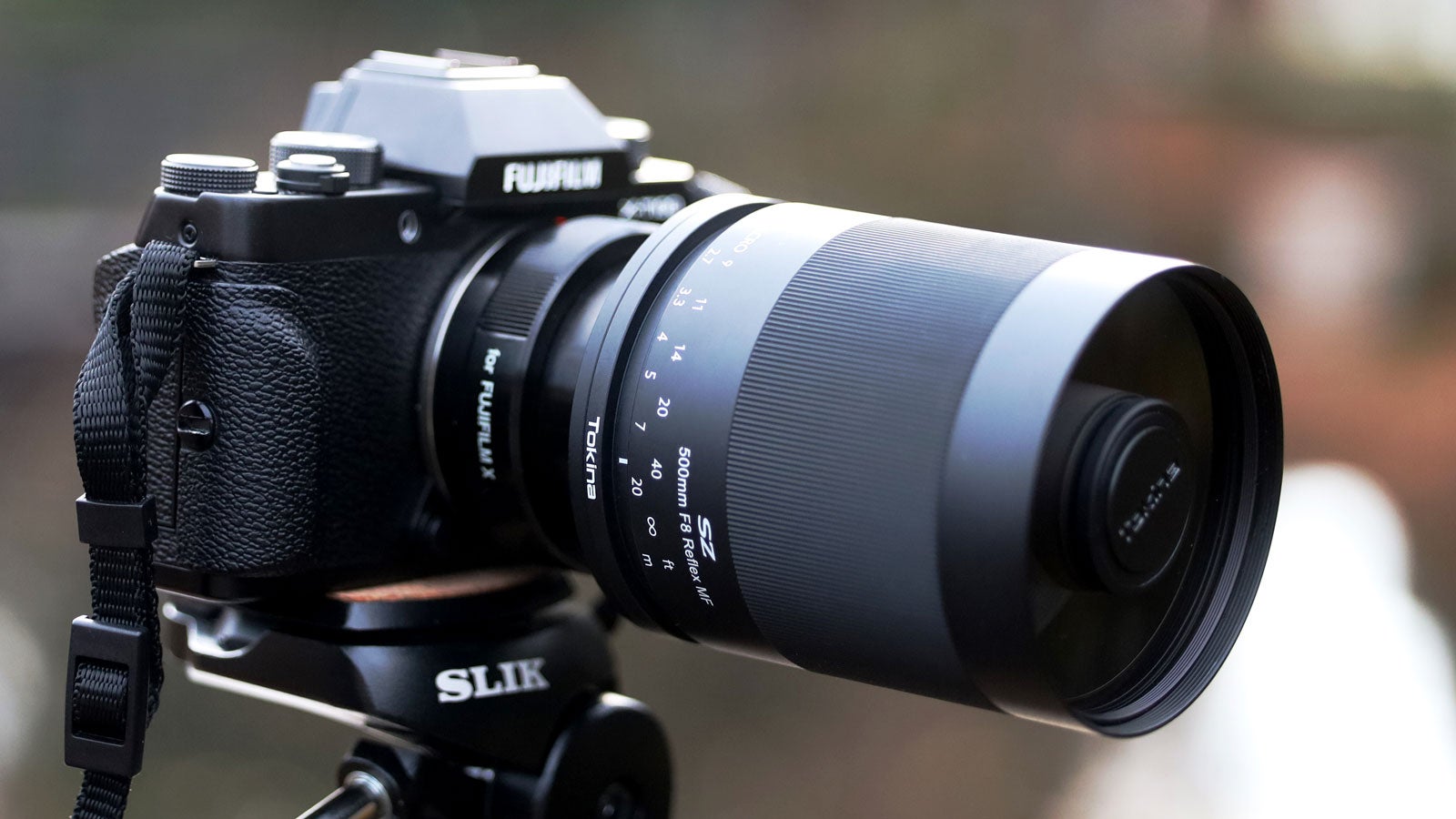
As for the competition, these days there’s not a lot of it. Mirror lenses used to be relatively easy to find even amongst the lens stock of first-party manufacturers, but it’s no longer the case. None of the first-party manufacturers currently sells a mirror lens, and other than Kenko Tokina, only Bower and Opteka currently have any 500mm f/8 optics. (Both brands also have 500mm f/6.3 units as well, which Tokina thus far lacks.)
Both of these current rivals lenses are, like Tokina’s optic, using a T-mount design to allow conversion to a wide range of mounts. Their size and weight are close enough to be indistinguishable from the 2.9 x 3.5-inch, 10.9-oz Tokina lens. Both rivals are priced around the US$100 mark without a T-mount adapter, suggesting the ballpark we should be expecting Tokina to hit. (Or given its greater brand recognition, perhaps aim a little above.)
Similarly far-reaching refractive lenses are far bigger and more expensive
It’s trickier to draw parallels against refractive lenses because Tokina’s specs don’t include the size and weight of the required T-mount adapters, which vary significantly between mounts. (And unfortunately, the specs for the Kenko 400mm f/8 are only provided with a Canon EF-mount adapter attached, likewise stymieing direct comparisons.
With that said, though, even remembering that you need to account for the weight of the adapter, it’s clear that mirror lenses are far cheaper, lighter and smaller. By way of example, Nikon’s AF-S Nikkor 500mm f/5.6E PF ED VR lens for DSLRs costs US$3,600 and weighs close to five times as much. It also has a 1.3-inch broader and 5.8-inch longer barrel.
And that’s despite being a sub-frame APS-C lens compared to the full-frame Tokina. The difference would be even greater when compared to another full-frame optic. (But this comparison seems fairer given the Tokina’s fixed f/8 aperture.)
Optical formula
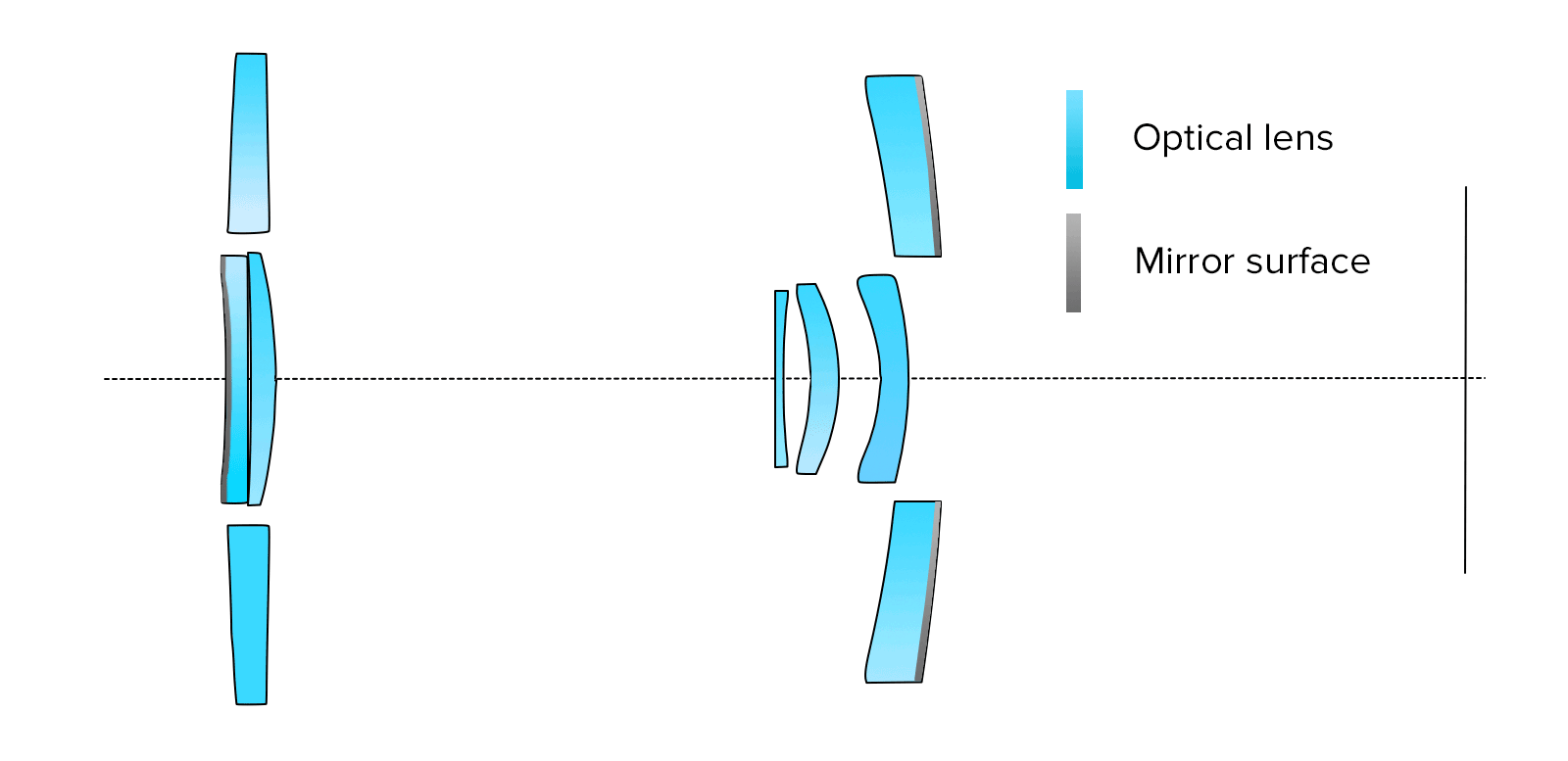
Tokina doesn’t state the optical compositions of the individual elements in the lens, but the company does say that it has included multi-coatings. The lens has 72mm filter threads upfront and accepts 30.5mm filters at the rear, just like its Opteka rival. The Bower, meanwhile, only has the rear filter support and lacks any filter threads up front.
The 500mm f/8 mirror lens can focus to a minimum distance of 5.6 feet (1.7m). At this distance, it yields a maximum magnification of 1:2.86 or 0.35x.
A lens hood is included in the product bundle, but sadly it’s a screw-in type. We far prefer bayonet hoods as they’re quicker and easier to mount and can usually be stored neatly on the barrel in reverse. They also typically play better with filters and lens caps.
Price and availability
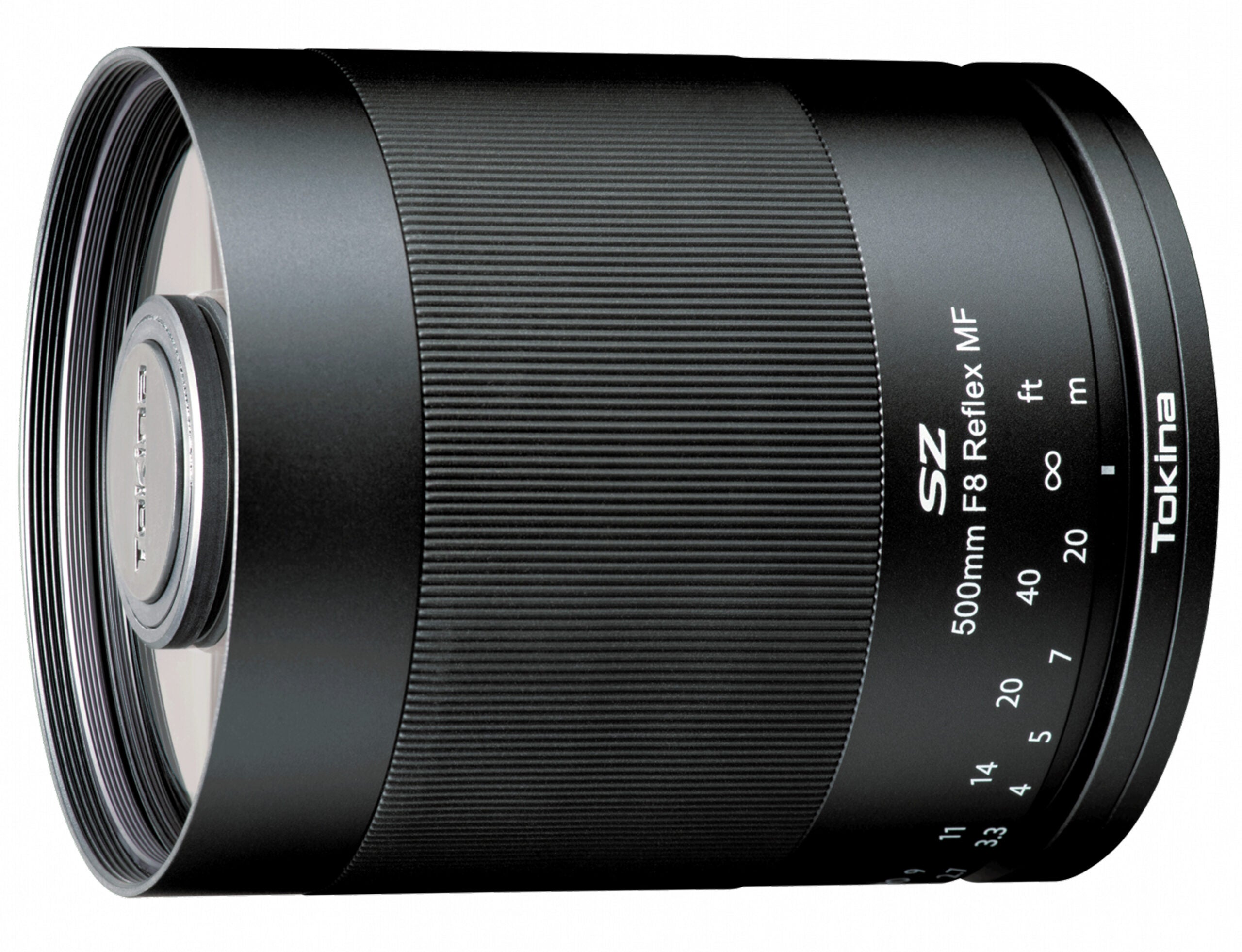
The Tokina SZ Super Tele 500mm f/8 Reflex MF goes on sale from February 18, 2022. Pricing for the new lens had not yet been disclosed at press time. The lens is available either standalone as a T-mount optic if you already have the necessary adapter(s) for your gear. If not, six different bundles are available that include both the lens and the requisite adapter for Canon EF, Fujifilm X, Micro Four Thirds, Nikon F or Z and Sony E-mounts.
Interestingly, Tokina’s site makes no mention of the Canon EF-M and Pentax K-mounts, even though the company sells T-mount adapters for both. We’re not surprised the company isn’t seeing enough customer demand to offer bundles for these mounts. We must confess though that we’re a little mystified as to why they’re not mentioned at all, given that both mounts were still on Kenko Tokina’s radar as recently as last month’s 400mm f/8 II announcement.
Of course, T-mount adapters are available for far more mounts than just these. Tokina itself also offers Nikon 1 and Four Thirds adapters, and third parties offer even more. So the range of mounts with which this lens can be used is extremely broad indeed.
Watch this space for more info on pricing as we hear it! More details can be found on the Tokina website.
The post Tokina’s new far-reaching 500mm f/8 mirror lens will be available soon in a wide range of mounts appeared first on Popular Photography.